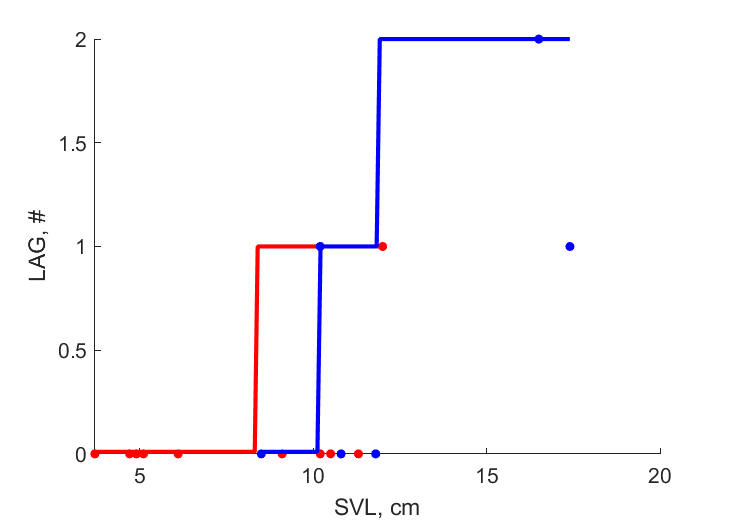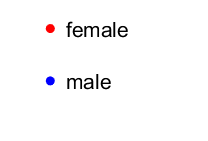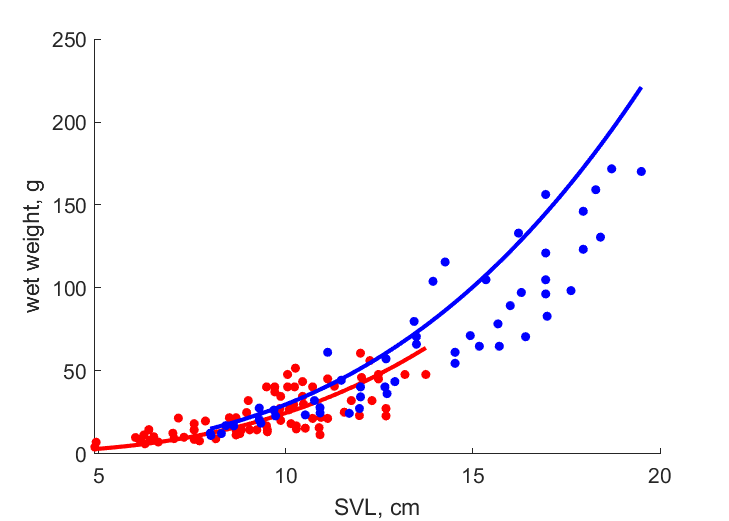Predictions & Data for this entry
| Model: std | climate: Am, Aw | migrate: | phylum: |
| COMPLETE = 2.5 | ecozone: TPam | food: biCi | class: |
| MRE = 0.198 | habitat: 0iTf, 0iTh | gender: Dg | order: |
| SMSE = 0.107 | embryo: Tt | reprod: Os | family: |
Zero-variate data
| Data | Observed | Predicted | (RE) | Unit | Description | Reference |
|---|---|---|---|---|---|---|
| ab | 240 | 240.9 | (0.003775) | d | age at birth | Wiki |
| tp | 213.5 | 212 | (0.007202) | d | time since birth at puberty | Wiki |
| am | 1898 | 2010 | (0.05922) | d | life span | AnAge |
| Lb | 3 | 3.024 | (0.008086) | cm | SVL at hatching | Eckh2018 |
| Lp | 7 | 7.063 | (0.009042) | cm | SVL at puberty for females | AndrGuar2005 |
| Li | 9.2 | 9.695 | (0.05378) | cm | ultimate SVL for females | AndrGuar2005 |
| Lim | 13.8 | 12.43 | (0.09897) | cm | ultimate SVL for males | AndrGuar2005 |
| Wwb | 0.69 | 0.6824 | (0.01108) | g | wet at birth | Eckh2018 |
| Wwi | 22.6 | 22.48 | (0.005369) | g | ultimate wet weight for females | AndrGuar2005 |
| Wwim | 61 | 57.41 | (0.05881) | g | ultimate wet weight for males | AndrGuar2005 |
| Ri | 0.08219 | 0.07881 | (0.04114) | #/d | max reprduction rate | Wiki |
Uni- and bivariate data
| Data | Figure | Independent variable | Dependent variable | (RE) | Reference |
|---|---|---|---|---|---|
| Lt_f |   | SVL | LAG | (5.05) | AndrGuar2005 |
| Lt_m |   | SVL | LAG | (0.7525) | AndrGuar2005 |
| LW_f |   | SVL | wet weight | (0.3522) | AndrGuar2005 |
| LW_m |   | SVL | wet weight | (0.3198) | AndrGuar2005 |
Pseudo-data at Tref = 20°C
| Data | Generalised animal | Furcifer pardalis | Unit | Description |
|---|---|---|---|---|
| v | 0.02 | 0.01911 | cm/d | energy conductance |
| p_M | 18 | 156.8 | J/d.cm^3 | vol-spec som maint |
| k_J | 0.002 | 0.002 | 1/d | maturity maint rate coefficient |
| k | 0.3 | 0.09988 | - | maintenance ratio |
| kap | 0.8 | 0.7264 | - | allocation fraction to soma |
| kap_G | 0.8 | 0.8015 | - | growth efficiency |
| kap_R | 0.95 | 0.95 | - | reproduction efficiency |
Discussion
- Males are assumed to differ from females by {p_Am} only
- Since most growth occurs in the first yr, so Lines-of-Arrested-Growth (LAG) is 0, LAG is treated as function of SVL
Bibliography